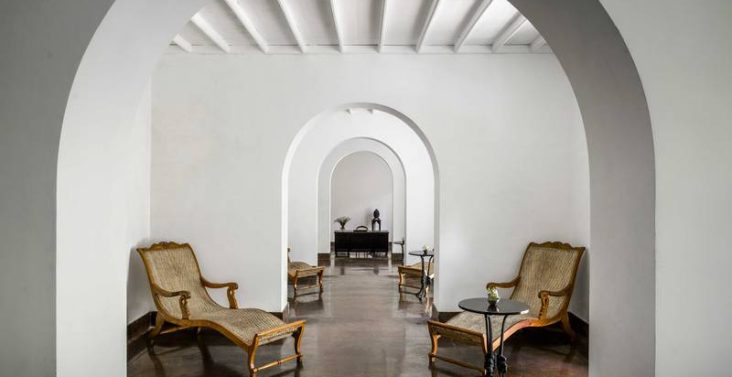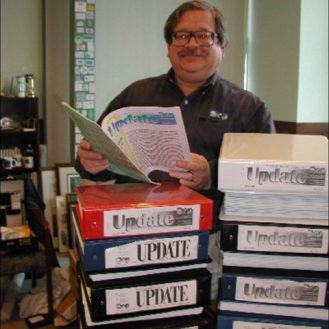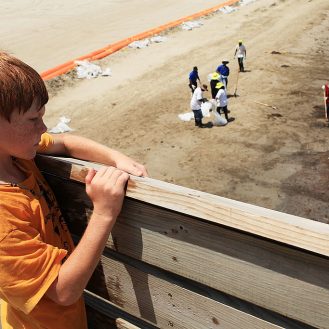The Bureau of Land Management (BLM) issued its record of decision last week for the SunZia Southwest Transmission Project, a precursor to its final right-of-way grant required for construction on federal lands, which is expected in the next month or so.
The SunZia transmission line will traverse approximately 520 miles of federal, state and private lands, delivering up to 4,500 megawatts of primarily renewable energy from New Mexico into Arizona and California. One megawatt per hour can provide electricity for 400 to 900 homes a day.
Pattern Energy Group LLC, the line’s owner, says its goal is to transmit clean energy that will be affordable and help fulfill air quality standards across the lower Southwest.
The first plans for the SunZia line were introduced in 2006 by Southwestern Power Group. Last July, Pattern Energy, a renewable energy company, purchased SunZia and invested more than $8 billion in its planning. Later in the year, the company gained key approvals from Arizona and New Mexico. Issuance of the right-of-way grant is the final milestone.
In addition to the transmission line, more than 900 wind turbines across three counties in New Mexico will be installed. Pattern says the project will be the most extensive clean energy infrastructure initiative ever undertaken in the history of the United States.
The SunZia project has had to revise the route of the transmission line many times in order to accommodate private lands, Department of Defense property and migratory bird patterns. The company has also faced hurdles from concerned environmental groups lobbying against the project because of their concerns about what construction will do to the historically untouched land.
“A lot of different routes were assessed and analyzed and studied,” said Kevin Wetzel, Pattern Energy’s assistant vice president of business development. “The route that was selected does represent the most environmentally compatible route as determined by an extremely robust, stakeholder-driven process that the Bureau of Land Management managed.”
The line will originate at a substation in central Torrance County, New Mexico, and terminate at an existing substation in southeast Pinal County, Arizona, though many still do not believe the project is justified.
The San Pedro Valley is considered to be one of the most biologically rich and diverse watersheds left in North America. Hundreds of species of birds migrate through the valley each year, where the SunZia line will be directly crossing.
“This project will pass through 33 miles of previously undisturbed watershed land next to the San Pedro River,” said Peter Else, of the Lower San Pedro Watershed Alliance. “Right through 33 miles of the most ecologically sensitive portion of these wildlife migrations.”
The San Pedro River is the longest free-flowing, undammed river left in the Southwest, creating a rich desert-riparian ecosystem surrounding it. It runs into the Gila River, which contains numerous endangered native fish species.
Keep Environmental Journalism Alive
ICN provides award-winning climate coverage free of charge and advertising. We rely on donations from readers like you to keep going.
Executives at Pattern Energy have prided themselves on their efforts to involve stakeholders into the conversation, but environmentalists say it is hard to see the bigger picture when the destruction is in your backyard.
“It’s totally avoidable,” Else said. “There are alternative routes through Arizona that Pattern Energy could take that would not impact this area at all.”
Pattern Energy has partnered closely with the Audubon Society, which has helped the company mitigate environmental disturbances by incorporating avian deterring technology to reduce the number of birds flying into wind turbines. The company also plans to replant saguaros where they have been uprooted during construction.
“They’ve been very actively pursuing our partnership,” said Jonathan Hayes, vice president and executive director of Audubon Southwest.
As more land is used to make way for clean energy facilities, the line between justifying the disruption and destruction of nature to reduce carbon emissions and slow the effects of climate change can appear blurred, but both Pattern Energy and the Audubon Society believe they do not have to be in opposition.
“I think that these projects can be developed in a way that is compatible with the natural resources around them. In a lot of ways, you can actually improve on the ecological footprint of your project area relative to what it was before,” Wetzel said.
“We know that over 60 percent of our bird species in North America are likely to be at risk of extinction by the end of this century if we don’t do something about climate change,” Hayes said. “It’s an existential threat to birds and life on the planet.”
Even with the BLM’s record of decision, Wetzel said its issuance is not the end of the company’s collaborative efforts. Public feedback was incorporated into the project route and design, and will continue to be, he said.
“We consider ourselves members of the communities that we develop and construct in,” he said. “We’re excited to continue that relationship and continue building on this success today to continue achieving what we all want to do, and get this project built.”
If all goes as planned, construction for the SunZia line will be completed in the first half of 2026, with power reaching the grid shortly thereafter.









